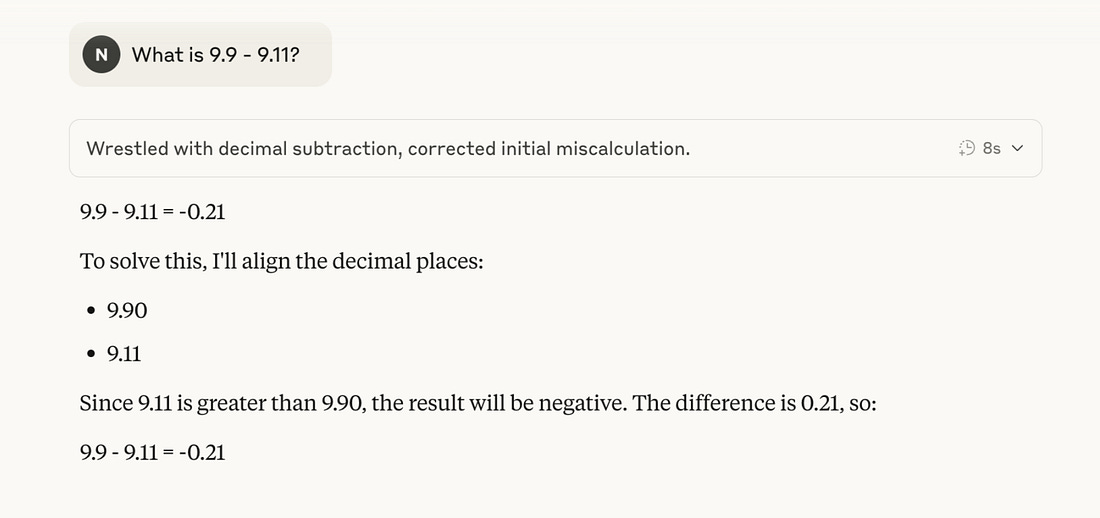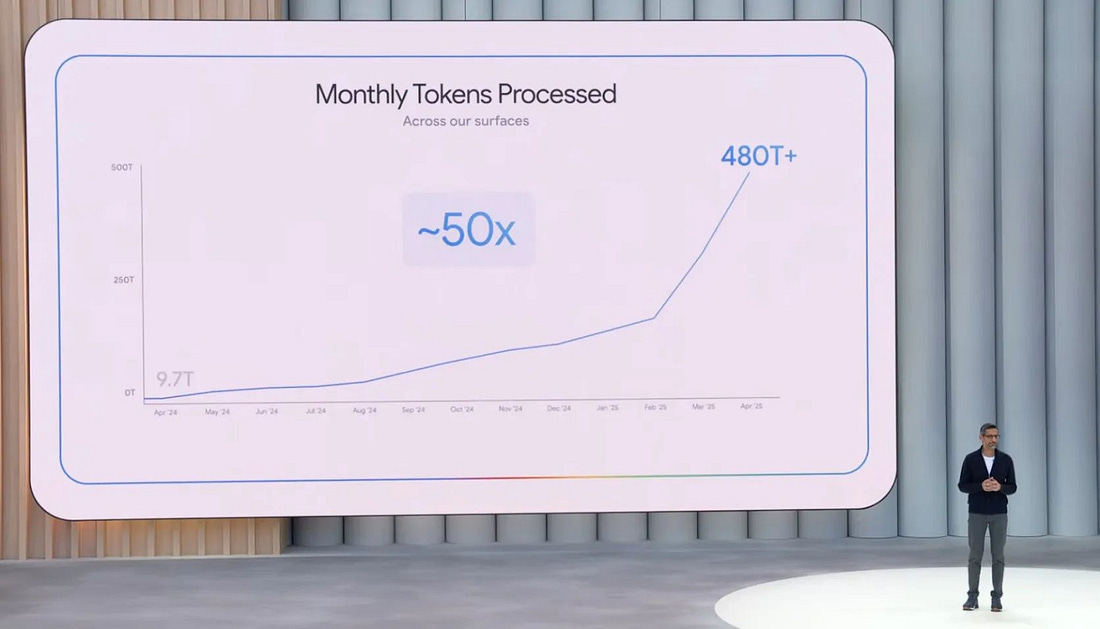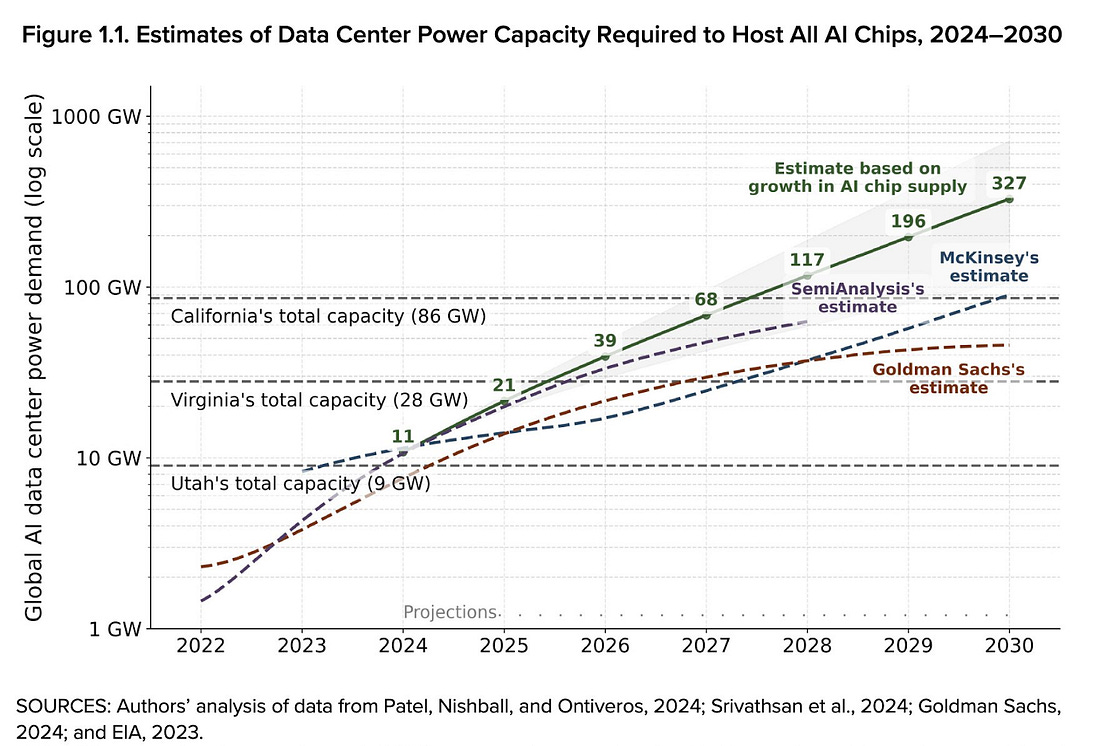🔮 Sunday edition #525: Integrating agents; token crunch; China’s EV victory; flame-throwing robots, big brains & …
🔮 Sunday edition #525: Integrating agents; token crunch; China’s EV victory; flame-throwing robots, big brains & Claude controls++An insider’s guide to AI and exponential technologiesHi, it’s Azeem. This week, we explore the shift from raw AI horsepower to systemic integration. Models are being wired into feedback loops, infrastructure and ecosystems. From Claude 4’s autonomous coding sprints to the rise of open agent protocols, the “agentic web” is no longer a theory – it’s being built. Across sectors, the race is on to operationalize AI. Let’s go! The agentic web is arriving2025 was billed as the year of AI agents and in many ways it has arrived. Google, OpenAI and Anthropic ship agents that code on-demand and fetch citations in minutes. Codex can spin up a bug fix faster than you can draft a ticket. But the question is no longer how smart they are – it’s whether they can run unattended across systems. Today, they can’t - even a 1% hallucination rate can unravel a long task chain. Still, progress is unmistakable. Rakuten, a Japanese tech conglomerate, let Claude 4 refactor code for seven hours with zero intervention. Each win is still shadowed by lethal slips – Claude 4, for all its impressiveness, still bungled “What’s 9.9 minus 9.11” – proof that 1 percent error still matters. Microsoft CTO Kevin Scott calls this build-out the “agentic web,” a mesh of AIs working through shared protocols. Apple’s forthcoming Intelligence SDK will hand those sockets to every developer, and emerging standards – MCP for tools, Agent2Agent for AI-to-AI chat – are becoming the thread tape. The pipes are going in, the journeyman is still on probation, but every new coupling cuts leaks and gets us closer to “hands-free” AI. See also:
Ravenous reasoning agentsGoogle’s inference load soared 50-fold in just 12 months, from 10 trillion tokens in April 2024 to 480 trillion in April 2025. More users played a role, but the bigger driver is the rise of reasoning models, which consume about 17 times as many tokens as predecessors because they run long internal chains of thought.
This exponential growth will continue as agentic workloads become more commonplace. For instance, I spent 2 million tokens building a small video game with Claude in under an hour; a typical chatbot session might use only 10,000 tokens in the same time. Chatbots wait for humans to type, while agents run continuously, limited only by available compute. That translates into steep prices: Google AI Ultra costs $250 per month, Claude Max $100–200, and ChatGPT Pro $200. OpenAI is reportedly thinking of a $20,000-per-month tier. Last week, we showed how training costs keep sliding down predictable curves, but inference is different. Although Moore’s Law and better algorithms cut the cost per token, demand still grew 50 times last year, far faster than efficiency gains. Whether the economics of inference can keep up with our appetite for longer contexts, deeper reasoning, and always-on agents is an open question. We may need to apply hard budgets to autonomous agents – just like the robot police in THX 1138, who abandon a chase once the cost crosses a set threshold. This kind of cost-governed autonomy where agents must justify, cap, or cancel actions based on compute limits, could become a defining constraint. The inference bottleneck won’t kill agentic AI, but it might force it to act with surgical precision. Grid strain or grid brain?AI consumes energy; everything does. The real issue is whether the electricity we spend on AI will help us fight climate change. I believe it will. RAND projects that by 2030 AI could draw about 327 GW – roughly 3.6–4 percent of today’s global generating capacity. That load is significant, but AI can also discover ways to shrink its own footprint and accelerate climate solutions. Consider Microsoft’s Discovery platform, which designed a PFAS-free data-center coolant in hours instead of years and FutureHouse’s Robin AI, which identified promising age-related macular degeneration drug candidates in weeks. The same processors driving up power bills can uncover breakthroughs that cut them. Local strain is real. Collectively, around a dozen hyperscaler projects in Nevada have asked NV Energy for nearly 6 GW of new electricity capacity – about 40 percent of the state’s entire grid. Governments should insist that new data centers run as much as possible on clean power and recycle waste heat. Is the trade-off worth it? Yes. If AI expansion is paired with aggressive clean energy build-outs, the technology will help decouple economic growth from emissions. Limiting AI today to save energy would throttle a tool that can slash energy use tomorrow. See also:
Shenzhen’s hardware hegemonyIn recent years, automakers have fought for the industry’s future. We previously argued that Germany’s automotive sector faced an existential threat. Today it is clear that China has won the electric vehicle hardware race. Evidence is everywhere. BYD claims its batteries can recharge in five minutes. Xiaomi delivers Ferrari-like styling at Volkswagen prices and Morgan Stanley projects Xiaomi will earn $32 billion in automotive revenue by 2027— about the size of Tesla’s entire auto business in 2020. China also controls the entire supply chain – batteries, motors and electronics. The advantage is not only speed but an ecosystem density the West cannot replicate. Hardware dominance, however, is only half the story. Morgan Stanley analyst Adam Jonas notes that value is migrating from hardware to software. Tesla’s pivot from building the “best car” to achieving the “best autonomy” shows that once hardware commoditizes, software differentiates. Profit pools now lie in over-the-air updates, data services, and robotaxi networks. Algorithms and regulatory approvals, not sheet metal, create the new moats. China owns the hardware victory, but the software endgame remains wide open. Either Tesla wins here or it doesn’t win at all. See also:
Elsewhere
Thanks for reading! 1 CBRN weapon projects, involving chemical, biological, radiological and nuclear weapons, encompass various initiatives aimed at developing, testing, deploying and mitigating the risks associated with such weapons. You're currently a free subscriber to Exponential View. For the full experience, upgrade your subscription. |
Similar newsletters
There are other similar shared emails that you might be interested in:




